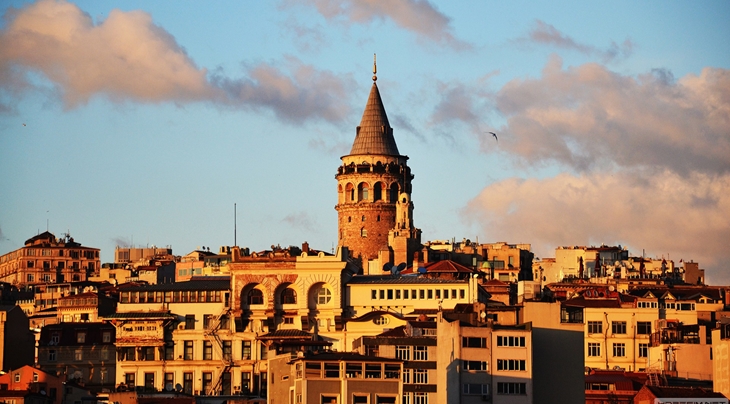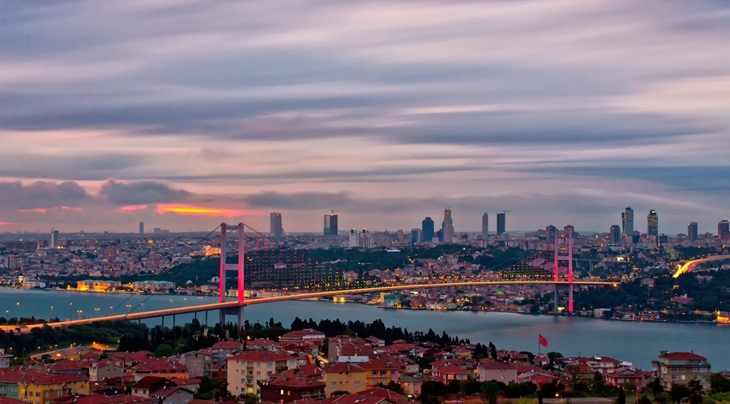Things To Do in Istanbul

-
Marmaray and Metro
The Marmaray was opened in 2013 and has transformed the city’s infrastructure. The Marmaray connects 76 kilometers of commuter railway from the eastern to the western city limits and connects the north-south tunnel axis of the city. The Marmaray connects to the Istanbul metro line at several key stops.
The Istanbul Metrosu is still being built, but the completed lines allow you to travel easily and inexpensively between Ataturk Airport and the main tourist and hotel areas.
-
Hagia Sophia Museum
This architectural marvel displays 30 million gold tiles throughout its interior, and a wide, flat dome which was a bold engineering feat at the time it was constructed in the 6th century.
Basilica Cistern
The Basilica Cistern is the largest of several hundred ancient cisterns beneath the city that provided a water filtration system for the buildings nearby.
Suleymaniye Mosque
Famed architect Sinan built this majestic structure for one of the greatest rulers of the Ottoman Empire. Although this mosque is less ornate, there are many similarities between it and the Hagia Sophia since the same architect was responsible for both.
Blue Mosque
Built between 1609-1616, this impressive mosque has six minarets. Why is it called "Blue Mosque?" There are two stories: the first, more common one is that the interior is covered in Blue İznik tiles. The second is: Many years ago, ancient sailors who sailed by the mosque on the Marmara Sea saw the blue colors of the sea reflected in the mosque.

Topkapi Palace
It was one of the major residences of the Ottoman Sultans for almost 400 years (1465- 1856) of their reign. The palace was also a setting for state occasions and royal entertainment. It also contains important holy relics of the Muslim world.
Galata Tower
Built by the Genoese, the tower is the one of the city’s most striking landmarks. It is 66.90 metres tall, with a cone-capped cylinder that dominates the skyline and offers a panoramic vista of Istanbul’s historic peninsula and its environs.
Dolmabahce Palace
The palace served as the main administrative centre of the Ottoman Empire from 1856 to 1922, apart from a 22-year interval (1887-1909).
Istanbul Modern Museum
Turkey’s first private museum to organise modern and contemporary art exhibitions, was founded in 2004 and occupies an 8,000 square metre site on the shores of the Bosphorus.
Istanbul Modern embraces a global vision to collect, preserve, exhibit and document works of modern and contemporary art and make them accessible to art lovers.

Miniaturk
The very first miniature park of the Republic of Turkey was founded in 2001. Models of 1/25 selected works of Turkish and Ottoman geographies are exhibited in Miniaturk where 126 models, including 59 from Istanbul, 55 from Anatolia and 12 from the Ottoman geography that remains outside the territorial boundaries of Turkey today, are shown.
Istiklal Street
One of the most famous streets in Istanbul houses boutiques, music stores, bookstores, art galleries, cinemas, theatres, libraries, cafes, pubs, night clubs, historical patisseries, chocolateries and restaurants. The cosmopolitan street is surrounded by an array of historical and politically significant buildings.
Grand Bazaar
The Grand Bazaar, built in the 15th century, is one of the largest and oldest covered markets in the world .
Maiden’s Tower
It is a tower lying on a small islet located at the southern entrance of the Bosphorus strait 200m from the coast of Uskudar in Istanbul.
Eminonu Square
The one of the main tourist destinations in Istanbul, Eminonu covers roughly the area on which the ancient Byzantium was built. The Galata Bridge crosses the Golden Horn into Eminonu and the mouth of the Bosphorus opens into the Marmara Sea. Up on the hill stands Topkapi Palace, the Blue Mosque and Hagia Sophia.
-
Turkish cuisine is fast making a name for itself on the worldwide culinary platform. The combination of flavours and ingredients are blended together to form dishes historically influenced by a number of cultures including the Greeks, Ottomans, Middle Eastern people and Balkans.
Istanbul is the city where almost every kind of cuisine can be tasted, due to the multicultural structure of a metropolis.